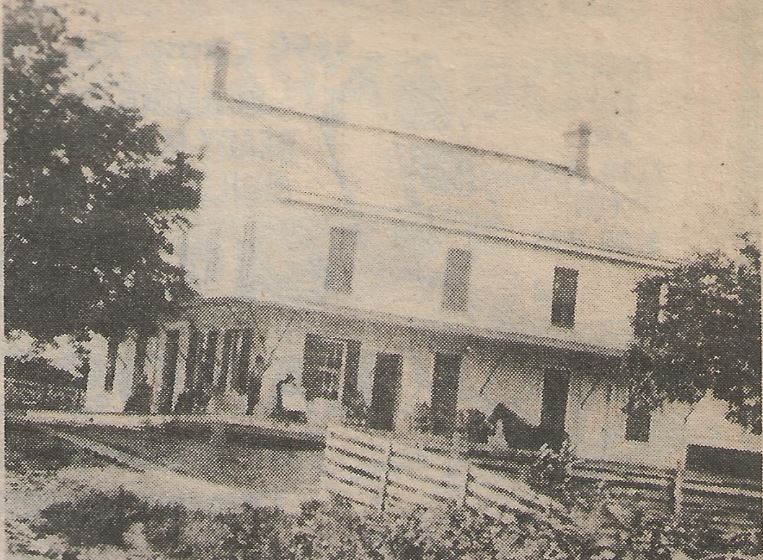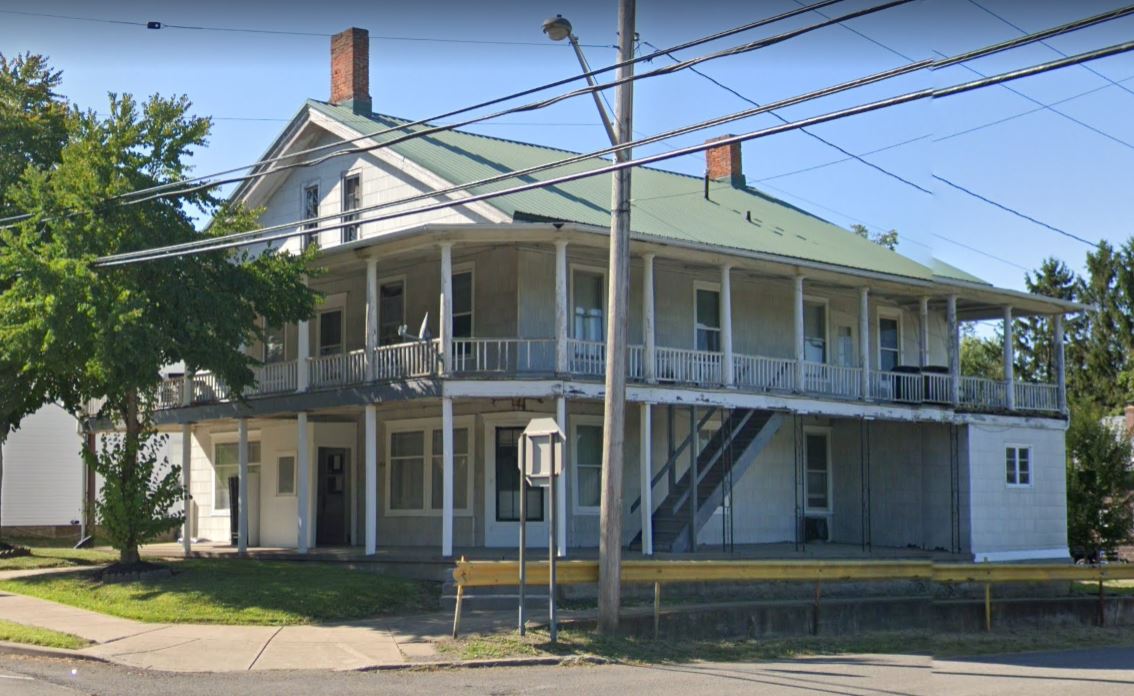| PERRYSBURG PANORAMA | |
|
Panorama means an unlimited viev. over a wide area and certainly we have that - the view of Lake Erie from Hooker Hill Road and also along Route 39 west of the village, and the beautiful scene coming from Perrysburg to Gowanda with the Cattaraugus Creek Valley before us from "Forty" to Versailles. Panorama also means a continuous series of events as shown in the history of the town. The first frame house was erected by Mr. Whitcomb and later was moved onto the Ray Dewey Farm. The first school was taught by Olive Bartoo in 1819. The first school site was along Route 39, west of the corners and on the north side of the road. The later frame building is now the home of the Burzaks. The early school minutes of District 4, which was in the village, say the school was across from the early cemetery. It was on the J. N. Adam farm land and long ago abandoned. The first public building (inn or tavern) in the village was a log house owned by Elisha Ward at the corner of Campbell Avenue and in 1828, Ward built the frame upright part of the tavern run by Chancellor Campbell which still stands. Later it was run as a hotel by the Campbell and Briggs family and lastly by the Vail family when people came to visit patients at the J.N. Adam Hospital. They came by train from Buffalo and stayed overnight and ate meals at the hotel after the hospital opened in 1913. As the use of the automobile became prevalent and there was no longer a need for overnight stays, the hotel was made into apartments. It is now owned by Edward Christopher. The first store was run by Cobb, Cook and Pelton in 1827 on the corner where the fire hall now stands. The first mill was erected by Isaac Balcomb in 1820 on the branch of Silver Creek on Lot 44 near Route 39 and county line. The first religious meetings were held by the Methodists in 1820. Also that same year the Baptists organized and were given land for a church on the North Road near Versailles. They never built a church building, and later the organization moved to Gowanda and they sold the Perrysburg land. This free land was given by the Holland Land Company to the first religious group who organized in each township. The first death was of David Brand in 1820 and his was the first will probated in Cattaratigus County Surrogate Court. The first Perrysburg town meeting was held October 27, 1816. The minutes were recorded in a large suede-leather book bought, according to a seal inside the cover, at a bookstore at the center of the village of Buffalo. One must remember that Buffalo was burned in the War of 1812 and was a small village trying to rebuild in 1816. It was a special meeting to nominate one or more suitable persons for Justice of the Peace and to see if the town would agree to unite with other towns in the county in a petition to have the said county of Cattaraugus organized by the next session of Legislature. (Cattaraugus County did not have enough voters until 1817 to organize a government. The 1820 |

census showed 4000 residents in the whole county. At this meeting Simon Waterman was chosen moderator. Silas Nash, Timothy M. Shaw, and Dan Allen were nominated as Justices of the Peace. Six delegates were chosen as a corresponding committee to agree with other towns in a measure of petitioning to have the county organize and to affect a county nomination. Silas Nash, Ira Waterman, Benjamin Waterman, Dan Allen, Jared Benedict and James Godard were chosen the committee. In March, 1817, the first annual town meeting was held at the dwelling of Simon Waterman. Silas Nash was noted as first supervisor and Benjamin Waterman as town clerk. Also, three assessors, three highway commissioners, two poor masters, three fence viewers, and four pathmasters were chosen. In 1818 at the annual meeting they added a school commissioner, school inspectors, and a pound-master to the existing officials of the town. It was also noted that the town of Perry be divided east and west on the south line of the fifth tier of the township of the Holland Land Company. Dan Allen, Phineas Spencer and Benjamin Water were the committee to send a petition to the legislature. A special town meeting in October 1818 was called to see if it was agreeable to use the town's proportion of bridge money in erecting a bridge across the Cattaraugus Creek - the commissioners of Highways to give a sum of money necessary to complete the bridge now begun at Aldrich Mill (later Gowanda), provided that Aldrich or the county of Niagara (later Erie Co.) should give their proportion of the money of erecting bridges between the towns. Information collected by Lorraine Marvin, Perrysburg Historian. |

Contributed by Judith Quinn